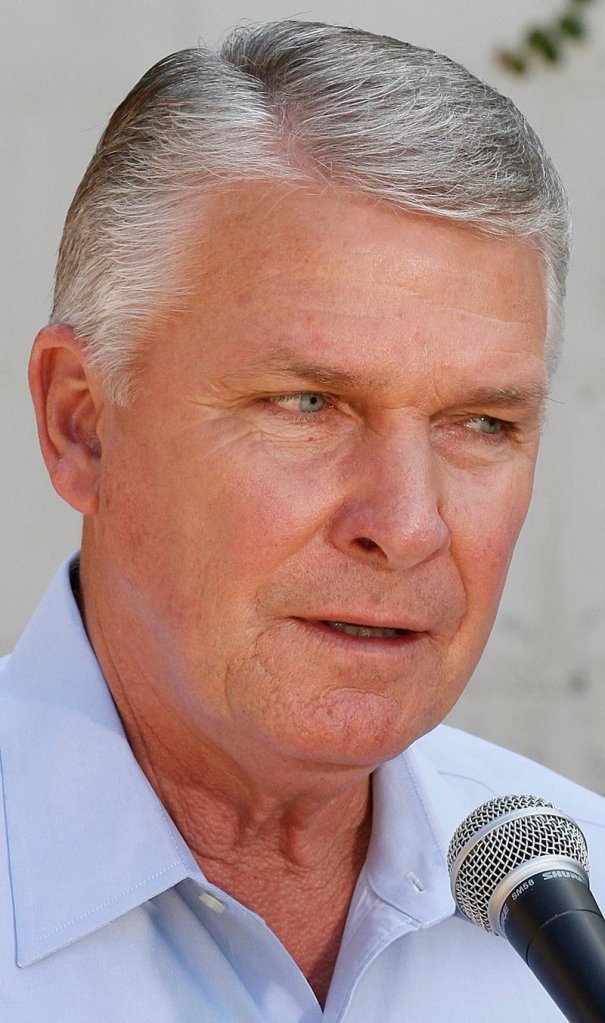BILOXI, Miss. – BP’s new boss says it’s time for a “scaleback” in cleaning up the Gulf of Mexico oil spill. Federal officials say there is no way the crude could reach the East Coast. And fishing areas are starting to reopen.
There were several signs Friday that the era of thousands of oil-skimming boats and hazmat-suited beach crews is giving way to long-term efforts to clean up, compensate people for their losses and understand the damage wrought. Local fishermen are doubtful, however, and say oil remains a bigger problem than BP and the federal government are letting on.
Other people contend the impact of the spill has been overblown, given that little oil remains on the Gulf surface, but Bob Dudley, who heads BP’s oil spill recovery and will take over as CEO in October, rejected those claims.
“Anyone who thinks this wasn’t a catastrophe must be far away from it,” he said in Biloxi, where he announced that former Federal Emergency Management Agency chief James Lee Witt will be supporting BP’s Gulf restoration work.
After an April 20 rig explosion that killed 11 workers, BP’s blown-out well gushed an estimated 94 million to 184 million gallons of oil before a temporary cap stopped it July 15. Efforts to permanently plug the gusher had been expected to begin as early as Sunday, but the government’s point man for the spill said Friday that those plans hit a snag.
Crews found debris in the bottom of the relief well that ultimately will be used to plug the leak for good, retired Coast Guard Adm. Thad Allen said. The debris must be fished out before crews can begin a procedure known as a static kill that hopefully will make the rest of the job easier.
“It’s not a huge problem, but it has to be removed before we can put the pipe casing down,” Allen said.
The sediment settled in the relief well last week when crews popped in a plug to keep it safe ahead of Tropical Storm Bonnie. Removing it will take 24 to 36 hours and likely push the kill back to Tuesday, Allen said.
Once the relief well is ready, crews can begin the static kill, in which mud, and possibly cement, are pumped in through the temporary cap. The better that procedure seals the blown-out well, the easier it will be to plug it forever by pumping in cement from below using the relief well. The blown-out well could be killed for good by late August, although a tropical storm could set back the timetable.
As work of plugging the well appears to reach the homestretch, so does much of the cleanup work. Relatively little oil remains on the surface of the Gulf, leaving less for thousands of oil skimmers to do.
Dudley said it’s “not too soon for a scaleback” in the cleanup, and in areas where there is no oil, “you probably don’t need to see people in hazmat suits on the beach.”
He added, however, that there is “no pullback” in BP’s commitment to clean up the spill.
There had been fears that the massive spill could reach South Florida and the East Coast through a powerful loop current, but federal officials said Friday that earlier reports that some oil had reached the current were wrong.
Copy the Story Link
Send questions/comments to the editors.



Success. Please wait for the page to reload. If the page does not reload within 5 seconds, please refresh the page.
Enter your email and password to access comments.
Hi, to comment on stories you must . This profile is in addition to your subscription and website login.
Already have a commenting profile? .
Invalid username/password.
Please check your email to confirm and complete your registration.
Only subscribers are eligible to post comments. Please subscribe or login first for digital access. Here’s why.
Use the form below to reset your password. When you've submitted your account email, we will send an email with a reset code.